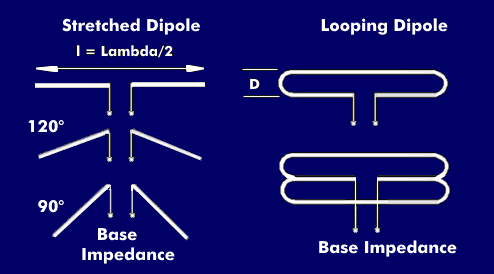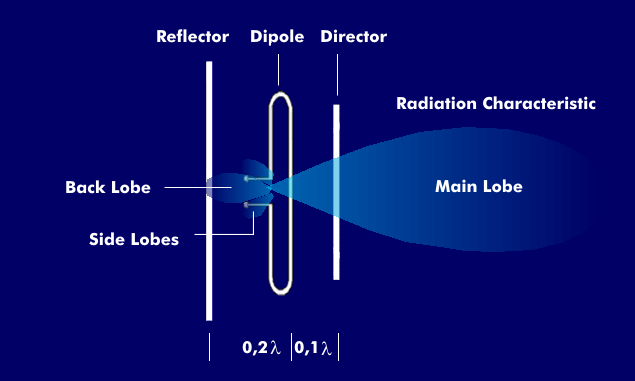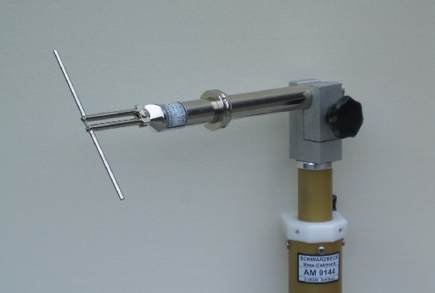dipole antenna
The dipole antenna is a wire antenna for terrestrial RF signals which converts the electrical component of the electric field. It is designed as a flattened rectangle and forms an open resonant circuit tuned to the receive frequency.
The simple dipole antenna consists of a stretched piece of wire of a defined length, divided in the middle where the connections are located. The length of the dipole corresponds to half the wavelength 'lambda/2', hence the name half-wave dipole. Besides this type, there is also the loop dipole, where the ends of the stretched dipole are connected to each other. The loop or folded dipole has about four times the radiation resistance of the simple, stretched dipole and is about 240 ohms to 280 ohms. Other designs of the open dipole are the line sections spread at a certain angle.
These dipoles are called inverted vee because of the V-like angulation and can be angled at 90° and 120° spread angles. In addition, there is the double loop dipole, whose radiation resistance is between 500 ohms and 2 kilo-ohms, and the round dipole.
The receiving and radiating characteristics are perpendicular to the dipole plane. Depending on the plane of polarization, there are dipoles designed for the vertical plane of radiation, the vertical dipoles, others, the horizontal dipoles are designed for the horizontal plane. Important parameters are the antenna impedance resp. the footpoint resistance and the antenna gain, which is 1.6. The bandwidth of the dipole is determined by the ratio of length to diameter.
In addition to the flat design used in Yagi antennas, there is the circular dipole, which has uniform reception characteristics in all directions. Circular dipoles or ring dipoles are mainly used for the reception of VHF broadcasting, because the circular dipole has to receive VHF transmitters from all possible directions. The frequency range for FM broadcasting is between 87.5 MHz and 108 MHz, which means that the circular dipole, tuned to the average wavelength of 100 MHz, must have a diameter of about 50 cm.



